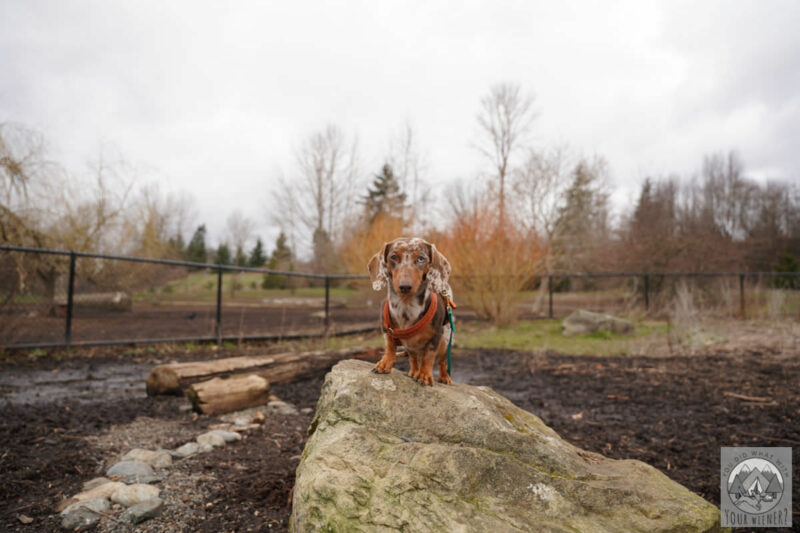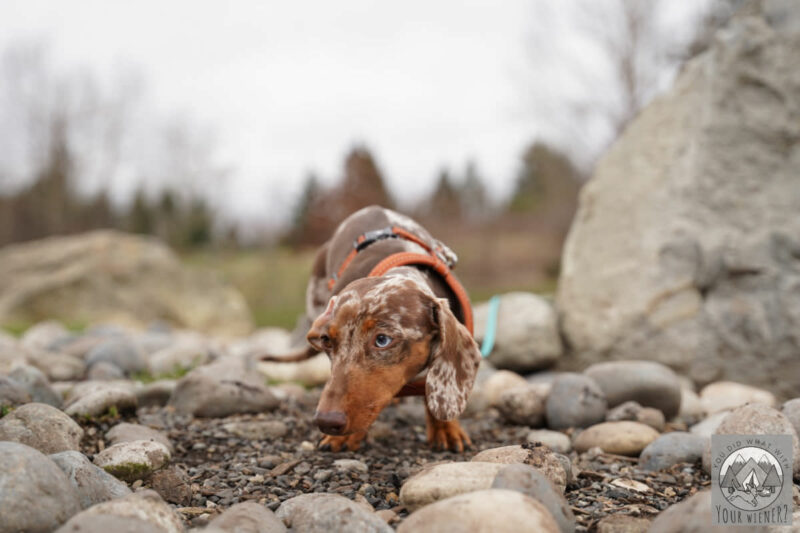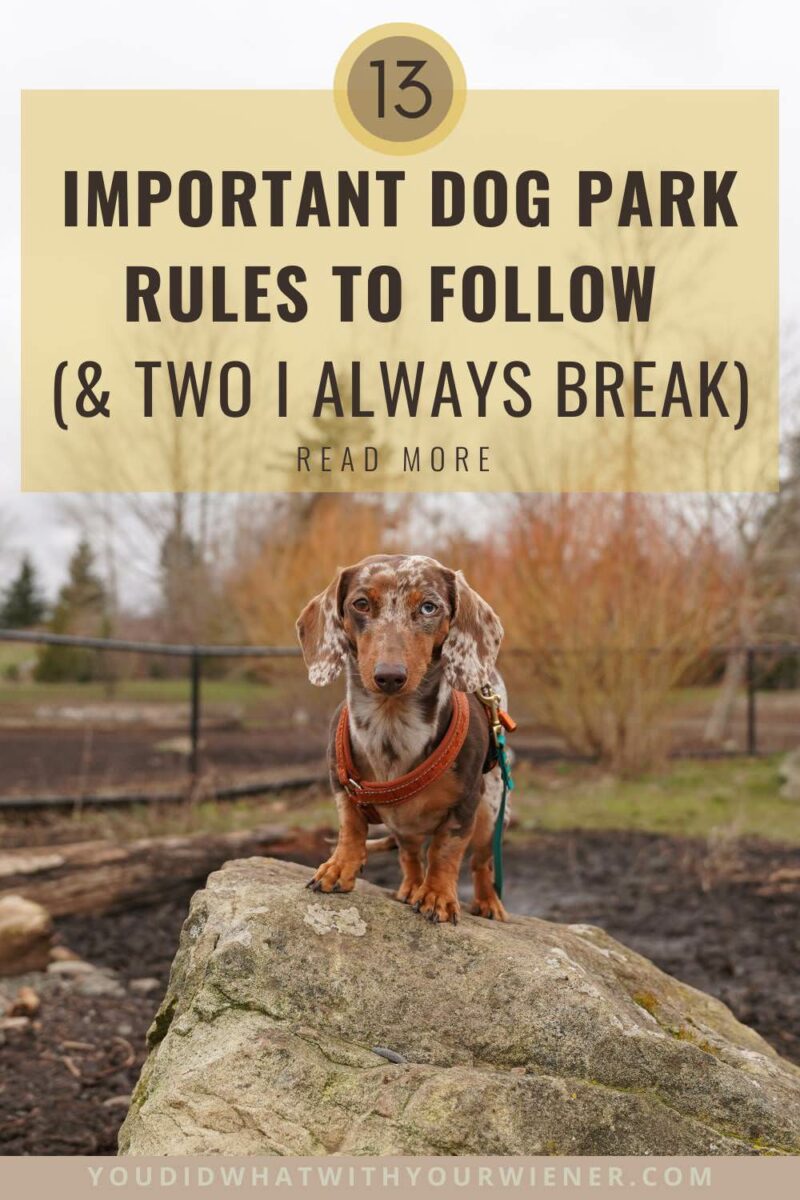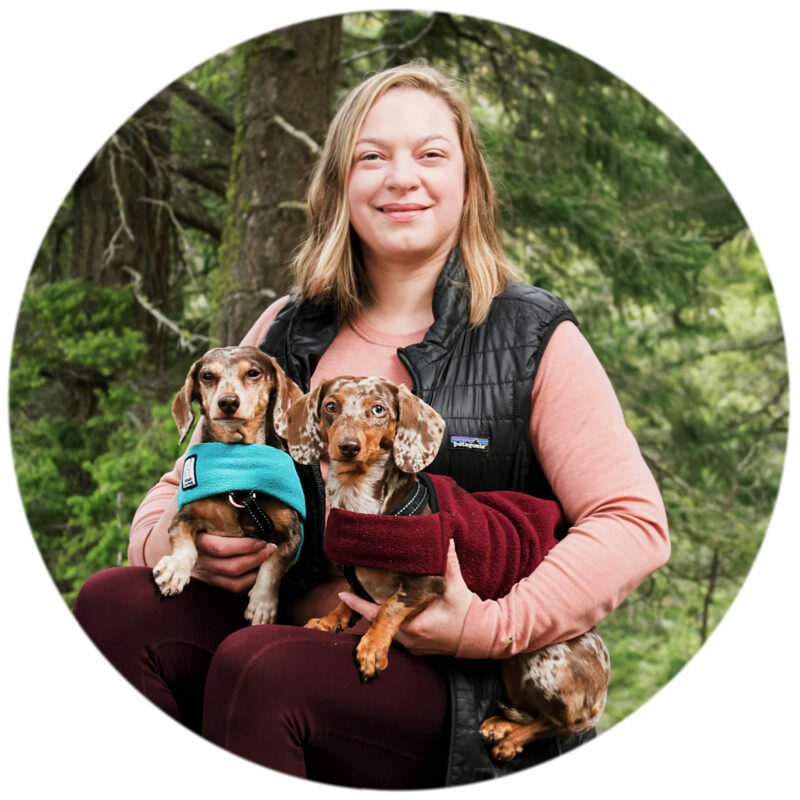13 Important Dog Park Rules to Follow (And Two I Always Break)
If you’ve visited a dog park, you probably noticed that most have the rules posted near the entrance.
But not all do and not all dog parks have the same rules.
The dog park rules below are true at almost every dog park and even if they are not official, it’s courteous to observe them.
Following these rules will also help prevent conflicts between dogs and help keep your dog safe.
UPDATED: This article was originally published July 11, 2011

Important Dog Park Etiquette Rules to Know
1) No Sick or Unvaccinated Dogs Allowed
Dog parks can be a cesspool of germs and disease.
Things like canine parvovirus (parvo) and the dog flu are easily transmissible.
If your dog is not vaccinated against common diseases and parasites, they can get really sick from visiting a dog park.
If your dog is sick, they can spread it to other dogs at the park, potentially putting their life in danger.
2) Don’t Bring Your Dog If They’re In Heat
Some dog parks don’t allow any intact dogs to visit the park, whether male or female.
But female dog in heat pose a particular problem.
Simply being around a female dog can cause male dogs to fight.
Female dogs, even if one is spayed, may fight each other.
And, of course, it only takes a second for an intact male dog to accidentally impregnate a female dog in heat.
3) No Choke, Spiked, or Pronged Collars
When dogs rough-house and play, they often grab the other dog’s neck or collar.
Spikes and prongs can cause injury to both dogs.
If a dog bites down on the collar, the spikes can cause damage to the dog’s mouth and to the wearer’s neck and throat.
What training tools you use on your dog outside of the dog park is your own business but remove them before you go in.
4) Don’t Let Any Dogs Escape When You Enter and Exit the Dog Park
Most dog parks have a double gate.
The proper way to use them is to open the first gate, move your dog inside, completely close the gate behind you, and then open the next gate to enter the park.
This double gate system ensures that another dog inside the park can’t rush the gate when you open it and escape.
When you exit the park, use the same first gate, second gate method but make sure no dogs have slipped into the space between the gates with you before the open the final gate to outside.
If there are other dogs and people ahead of you waiting to enter or exit the park, wait for them to pass through both gates before you begin your entrance/departure.
5) Use Small and Large Dog Sections Appropriately
A lot of dog parks divide the play area into two sections – one for small dogs and one for big dogs.
If your dog isn’t truly a small dog, don’t use that side of the park.
If you have a small dog, don’t throw them to the big dogs, literally.
The difference in body size alone can create a hazard for small dogs as they can easily get stepped on or rolled by the bigger dogs.
In addition, sometimes bigger dogs will corner and chase smaller dogs, not necessarily out of aggression but because they might see little dogs as prey.
There are two exceptions to this rule:
- Some parks allow shy dogs of any size to use the small dog area
- If no one is using the small dog side, and your dog would like to be alone, it’s ok to use that side (but leave when a small dog comes into it.
6) Always Pick Up After Your Dog
There is no dog poop fairy. Not even at the dog park.
It’s up to you to notice when your dog poops, bag it, and throw it in the trash.
So many dogs use dog parks that it would quickly become like a sewer if even a fraction of visitors don’t pick up their dog’s poop.
Ans who wants to accidentally step in it and track it into their car or home?
Make sure you are not so absorbed in conversation, or scrolling on your phone, to notice when your services are required.
7) Supervise Your Dog at All Times
Your dog may be friendly but you don’t know about the other dogs at the park.
Maybe they are untrained, are having a bad day, or something your dog does triggers them.
You never know what other dogs will do, particularly when there are multiple dogs present.
When dogs get together in a group they tend to develop a pack mentality, which can be dangerous if they gang up on other dogs.
You are responsible for your dog’s actions and their wellbeing so always keep an eye on them.
If you see your dog overwhelming another dog, or you notice that your dog is getting nervous or scared, redirect their attention to you or another area of the park.
If that’s not enough to de-escalate the situation, it’s best to leave the dog park for the day.
8) Prevent Altercations Before They Occur
I assume you know your dog’s triggers so be watchful for anything that may cause your dog to become a “trouble-maker”.
For example, maybe your dog is so food focused they try to jump on people if they brought treats to the park for their own dog.
Or maybe your dog loves to chase the ball and it seems like being off leash in a wide-open space is the perfect place to play fetch.
But your dog doesn’t like to share and there are other dogs at the park that are as ball-obsessed as your dog is.
If two dogs run after a ball and one doesn’t back down when the other one tries to swoop in, a fight can occur.
Or maybe your dog loves to chase other dogs and sees it as play.
But you notice your dog is constantly chasing one particular dog and that dog doesn’t look like it’s having fun (flattened ears, tail between the legs, constantly rolling onto his back, etc.)
You need to be responsible and consider the safety of the other dogs and people in the park.
If your dog is constantly clashing with another dog it may be time to leave and come back another time. Signs that another dog has “had enough” are.
9) No Digging or Destructive Behavior
A hole in the ground is a terrible accident waiting to happen – to both dogs and humans.
A dog or a person can easily hurt themselves (even break a leg) from running or walking into a hole.
Digging near fencing may allow a smaller dog an escape path or a way in for a critter with a death wish.
If you see your dog digging, stop him/her immediately and fill in the hole!

10) Don’t Bring Treats or Food Into a Dog Park
Bringing food into a dog park can cause altercations.
You may be the most popular person at the park to the dogs, but you also run the risk of starting a fight.
The presence of food can create unnecessary tension and can cause some dogs to become territorial.
In addition, not all dogs have the best manners and there is a good chance your sandwich will be knocked out of your hand or you could be knocked over.
Your now unattended sandwich could be gobbled up and 1) cause a dog with allergies to have a bad reaction or 2) one of the ingredients could be poisonous to dogs.
11) Respect the Other Dog’s Space
Just because a dog is at the dog park, doesn’t mean they want to get up close and personal with the other dogs there.
Other dogs may not like being sniffed for prolonged periods, or at all, or don’t want to play.
Dog body language be subtle, and vary per individual dog, so if you are unsure if your dog should approach or rough-house with another dog at the park, ask the owner’s permission.
If a person is not comfortable with how our dog is interacting with theirs and asks that you give their dog some space, don’t take it personally and get offended.
Advocating for your dog is the responsible thing to do and completely acceptable (and should be normalized).
Simply redirect your dog to you or move to another area of the park.
12) Look Out For Your Fellow Dog Park Attendees
Dog owners tend to watch out for each other to reinforce a safe and fun atmosphere.
Do you see someone’s dog squatting in the corner while they aren’t looking?
Politely let them know and they will most likely thank you for keeping an eye out.
If you notice a hole in the fence, mention it to an owner if you see their dog over in that area.
The dog park can be a great way to meet people and creates a very communal environment.
13) Never Leave Your Dog Alone at the Dog Park
This one should absolutely go without saying but you would be amazed at how many people just “drop their dog off” at a dog park like it’s a dog daycare or something.
I’ve heard stories of people leaving their dogs alone at the dog park that range from an owner walking away from their dog to go get something in the car to people literally letting their dog inside the gate and driving off.
Never, ever leave your dog unsupervised at the dog park.
The Two Dog Park Rules I Break
There are two of the rules above that I don’t fully believe in and bend from time-to-time.
Yes, I know, if everyone thinks the rules don’t apply to them and does what they want, things can devolve into chaos.
But I don’t always break these rules and I try to mitigate the circumstances when I do.
The two rules are…
Sticking to the Small Dog Area
My Dachshund are truly small dogs at just under 11 lbs each.
I understand the point of bigger dogs not mixing with small dogs because of their prey drive and because big dogs can accidentally step on a smaller dog and injure them.
However, I think as long as I am aware of the special risks that come with having a small dog and are willing to leave the large dog area if my dog is in danger or causes an issue, I should not have to my small dog in the small dog area only.
I want my dog to be socialized towards dogs of all sizes.
If I always keep my dogs from big ones they won’t know the correct way to behave when they encounter them.
Also, sometimes there aren’t any dogs in the big dog area.
Since the big dog area has more space to run, I often take advantage of the opportunity.
With that being said, I do stick to the small dog side of the dog park the majority of the time.
If you choose to take your small dog into the big dog side, make sure you know how to break up a dog fight between a little and big dog.
Don’t Bring Treats to a Dog Park
It’s true that having treats in my pocket can make me a dog magnet, other owners should have enough control over their dog that they can call them away from me if they get too push or territorial.
While, ideally, my dog should already have good manners before I bring them to a dog park, a dog park can be a good place to practice obedience drills such as reliable recall among intense distractions.
Where else do you get this kind of opportunity?
If my dogs know that if they come when called they get good things like treats, the are way more likely to do it consistently.
I use the treats as a reward for them any time they do what I ask them – especially at a dog park.
I might mention here that, although tempting, I never feed someone else’s dog treats without asking permission first.
Many dogs have allergies or are on special diets for fitness or medical reasons.
Also, if I see that my having teats is causing an issue, I leave the park or go put the treats in the car.
Final Thoughts
Dog parks are a great option for exercising your dog, letting them run around off leash, and providing mental exercise through endless sniffing opportunities.
Rules can vary by dog park but there are some that are universal.
Whether you are a new dog owner, new to dog parks, or recently visited a dog park that didn’t have posted rules, this list of rules will give you a good idea of what to expect (and what is expected of you and your dog).
While I’m generally a rule follower, there are two that I break.
But even when I’m breaking the rules, I take 100% responsibility for my dog’s actions and go back to following the rule if I’m causing a disturbance.
If you have a Dachshund like I do, you may be interested in my article Is it Safe to Bring My Dachshund to the Dog Park?


About the Author
Hi, I’m Jessica. I’ve been studying the Dachshund breed since 2007, owned 3 of my own, and shared in the lives of thousands of others through their owner’s stories. When I’m not sharing what I know on this blog, you can find me hiking, camping, and traveling with my adventurous wiener dogs.

Interesting post. People wear white pants and high heels to a dog park? I don’t ever wear white pants and high heels when exercising my dogs, dog park or no. 🙂
I agree about the chance to do some training at the park. Seems like it would be a perfect place to do it and to practice recall.
Only once have I seen this barbie lady in high heels in the small dog area with her Chihuahua 🙂
A perfectly timed article, as I am still seething after my 13 year-old terrier, Kismet, got attacked while he was wading in the ocean this morning. We were at kitsilano beach Dog Park, and no one was watching this husky that grabbed my dog! I had my other dogs with me, but I started yelling NO!!!!OFF!!!! but the owner didn’t react. A woman finally came up and took the dog, saying “sorry, it’s not my dog”. GRRRRRRRR………..
Eeek. That’s scary. We still have never had anything like that happen to us.
This article is really complete and helpful. I find some rules quite common and some are absolutely necessary for the safety of dogs and their owners. Like you, I am also making the mistake of bringing junk food into the dog park. I will definitely change and share the article to my community of dog lovers. Thank you.